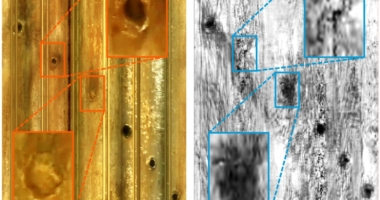Accelerometer systems are a crucial component of modern drone technology. By measuring acceleration in three dimensions, accelerometers can detect changes in speed and direction, ensuring the drone is operating safely, accurately, and efficiently. There are several types of accelerometers used in drone systems, including MEMS, piezoelectric, and optical accelerometers, each with its unique features and capabilities. Understanding the differences between these accelerometers can help drone operators make informed decisions about which type is best suited for their needs. The use of accelerometer systems in drone technology can provide numerous benefits, such as improving safety, accuracy, and efficiency, reducing the risk of accidents, and enhancing overall drone performance.
Drones have become increasingly popular in recent years, and with their rise in popularity comes a greater need to understand the technology behind their navigation systems. An essential component of a drone’s navigation system is the accelerometer, a device that measures acceleration.
How the Accelerometer System Works
The accelerometer system in a drone measures the acceleration of the drone in three dimensions: x, y, and z. The data is then sent to the drone’s flight controller, which adjusts the drone’s speed and direction accordingly. Additionally, the accelerometer system helps the drone maintain stability and altitude.
To measure altitude, the accelerometer detects acceleration in the vertical direction, while it determines attitude by detecting acceleration in the horizontal direction. By measuring these changes in acceleration, the drone can maintain a stable flight and adjust its position and orientation to respond to changes in the environment.
Importance of Accelerometers in Drones
Accelerometers play a crucial role in helping drones maintain stability and navigate their surroundings. When a drone encounters a gust of wind or other environmental changes, the accelerometer detects the changes in acceleration and adjusts the drone’s position and orientation accordingly.
Furthermore, accelerometers help drones detect obstacles in their path. By measuring acceleration, the drone can detect when it’s approaching an obstacle and adjust its course to avoid a collision.
In conclusion, understanding the mechanics of a drone’s accelerometer system is essential to ensuring the safe and efficient operation of a drone. By utilizing accelerometers for navigation, drones can maintain stability and navigate their environments, making them valuable tools for a variety of industries.
Understanding Gyroscopes in Drone Accelerometer Systems
Gyroscopes are an integral part of drone accelerometer systems, providing stability and accuracy for navigation and control. These devices measure the angular rate of rotation of a drone, helping it maintain its orientation in the air. This is especially important for drones used for aerial photography as they require stability to capture clear images.
Gyroscopes work alongside accelerometers in drone systems. While accelerometers measure linear acceleration, gyroscopes measure angular rotation. Together, they provide the drone with information to determine its position and orientation in three-dimensional space. This information is crucial for controlling and navigating the drone.
Gyroscopes detect changes in the drone’s attitude, such as turning or banking, and adjust its flight path accordingly. They can also detect vibrations and disturbances in the air, which can impact the drone’s stability and accuracy.
Importance of Gyroscopes in Drone Systems
Gyroscopes are essential components of drone accelerometer systems. Without them, drones would be unable to maintain their orientation in the air, making navigation and control difficult. These devices provide stability and accuracy, making it easier for drones to navigate their environments.
Different Types of Accelerometers Used in Drone Systems
There are several types of accelerometers used in drone systems, each with its unique features and capabilities. Understanding the differences between these accelerometers can help drone operators make informed decisions about which type is best suited for their needs.
In conclusion, gyroscopes are crucial components of drone accelerometer systems, providing stability and accuracy for navigation and control. Along with accelerometers, they provide drones with the necessary information to determine their position and orientation in three-dimensional space. Additionally, understanding the different types of accelerometers used in drone systems can help operators make informed decisions about the best fit for their needs.
Understanding Types of Accelerometers Used in Drone Systems
Accelerometers are vital components of drone systems, measuring acceleration in three axes to detect changes in speed and direction. There are several types of accelerometers used in drone systems, each with its unique features and capabilities.
The Different Types of Accelerometers
The most common type of accelerometer used in drone systems is the MEMS accelerometer. This type of accelerometer is small, lightweight, and relatively inexpensive, making it an ideal choice for drone applications. MEMS accelerometers can detect changes in acceleration as small as 0.001g.
Piezoelectric accelerometers are another type used in drone systems. Although they are more expensive than MEMS accelerometers, they offer higher accuracy and sensitivity. Piezoelectric accelerometers can detect changes in acceleration as small as 0.0001g.
Optical accelerometers are the most expensive type of accelerometer used in drone systems, but they offer the highest accuracy and sensitivity. Optical accelerometers use light to measure acceleration, detecting changes as small as 0.00001g.
Benefits of Using an Accelerometer System in Drone Technology
The use of accelerometer systems in drone technology has several benefits, making it an attractive option for drone operators.
Improved safety is one primary benefit of using an accelerometer system. By measuring the speed and direction of the drone, the system can ensure that it is flying within legal limits, reducing the risk of accidents and promoting safe operation.
Another benefit is improved accuracy. By measuring speed and direction, the system can ensure that the drone is flying in the correct direction and speed, reducing the risk of errors and improving overall accuracy.
Efficiency is also a benefit of using an accelerometer system. The system helps ensure the drone is flying in the most efficient manner possible, reducing fuel consumption and improving the drone’s overall performance.
In conclusion, understanding the different types of accelerometers used in drone systems is essential for drone operators to make informed decisions about which type is best suited for their needs. Additionally, the benefits of using an accelerometer system in drone technology, such as improved safety, accuracy, and efficiency, make it a valuable component of modern drone systems.
Accelerometer systems can provide numerous benefits to drone technology by measuring the speed and direction of the drone, improving safety, accuracy, and efficiency. This helps reduce the risk of accidents and improves overall drone performance. For a more in-depth understanding of how drone accelerometer systems work, read the article “How does a drone’s accelerometer system work?” on the TS2 Space website.
Don’t miss interesting posts on Famousbio









